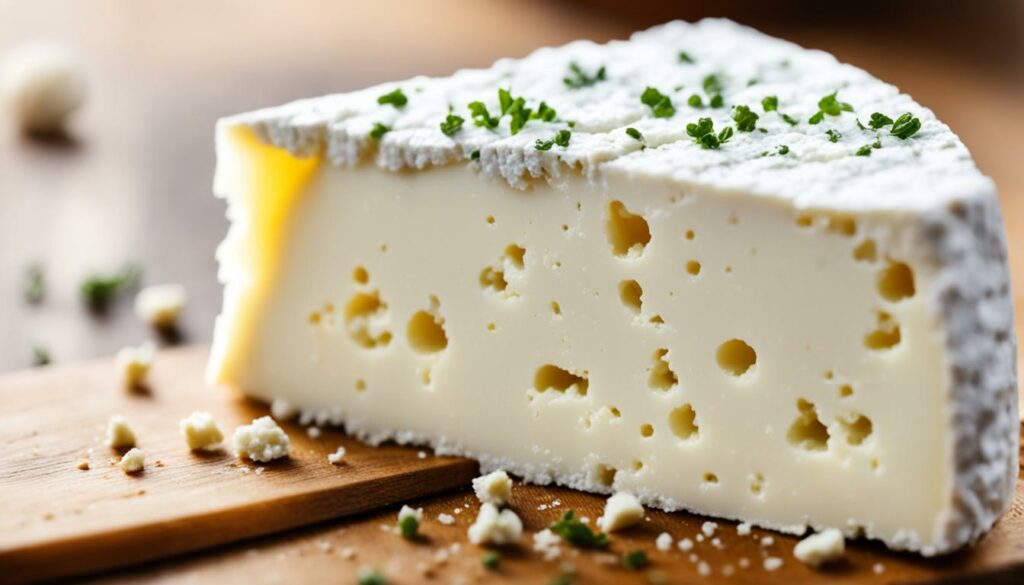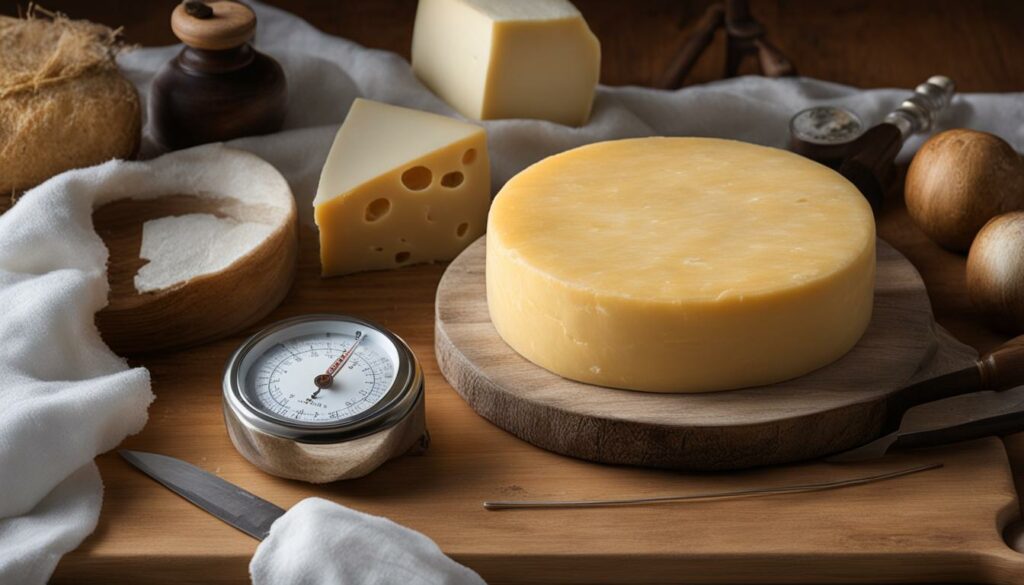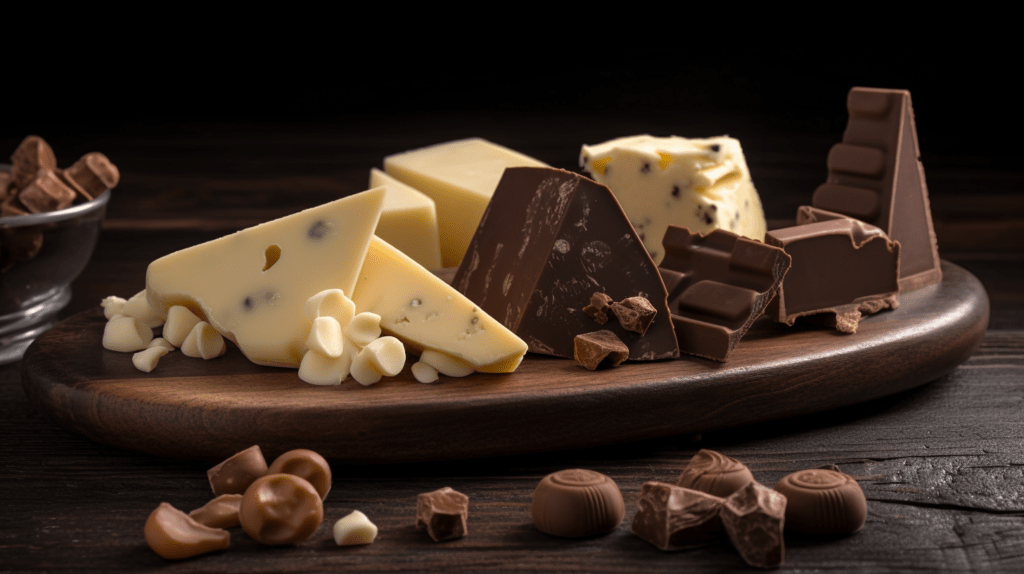Welcome to your ultimate guide to Danish Feta Cheese! If you’re a cheese lover looking for something unique and flavorful, authentic Danish Feta is a must-try option. Known for its high quality and traditional production methods, Danish Feta Cheese offers a delightful taste experience that will leave you wanting more. Whether you’re a seasoned cheese connoisseur or simply curious about exploring new flavors, this guide will provide you with all the information you need about Danish Feta Cheese.
Originating from Denmark, Danish Feta Cheese is made from cow’s milk, setting it apart from other types of Feta cheeses made from sheep’s and goat’s milk. This gives it a distinct taste and texture that is creamier and smoother compared to its Greek counterparts. Danish Feta Cheese has a mild flavor that perfectly complements a variety of dishes, making it a versatile ingredient in both traditional and contemporary recipes.
Not only is Danish Feta Cheese delicious, but it is also nutritious. It is a good source of calcium, which is essential for strong bones and teeth. Danish Feta Cheese is also rich in protein and contains beneficial probiotics for digestive health. Additionally, it is a lower calorie cheese option, making it a guilt-free indulgence that you can savor without worry.
So, where can you buy authentic Danish Feta Cheese? Well, it’s readily available in many specialty grocery stores, cheese shops, and even online. Look for reputable Danish Feta producers and suppliers to ensure you’re getting a high-quality product. With Danish Feta Cheese, you can bring a taste of Denmark into your own kitchen and discover the culinary possibilities it offers.
In this guide, we’ll delve into the origins of Danish Feta Cheese, explore its nutrition profile, share delicious recipes that showcase its versatility, and highlight the top Danish Feta producers. By the end, you’ll be equipped with all the knowledge you need to fully appreciate and enjoy this delectable cheese in your own culinary adventures. Let’s dive in and discover the world of Danish Feta Cheese together!
Understanding Feta Cheese
Feta cheese is a beloved Greek cheese that is renowned for its tangy flavor and crumbly texture. It is traditionally crafted using sheep’s milk or a combination of sheep’s and goat’s milk, resulting in a distinct taste that is unique to feta cheese.
Made from high-quality ingredients and aged in brine, feta cheese develops its characteristic tangy flavor profile. The salting process lends a pleasant saltiness to the cheese, enhancing its overall taste.
When it comes to texture, feta cheese is delightfully crumbly. It can be easily crumbled into salads or incorporated into various dishes, adding a wonderful texture that elevates the overall culinary experience.
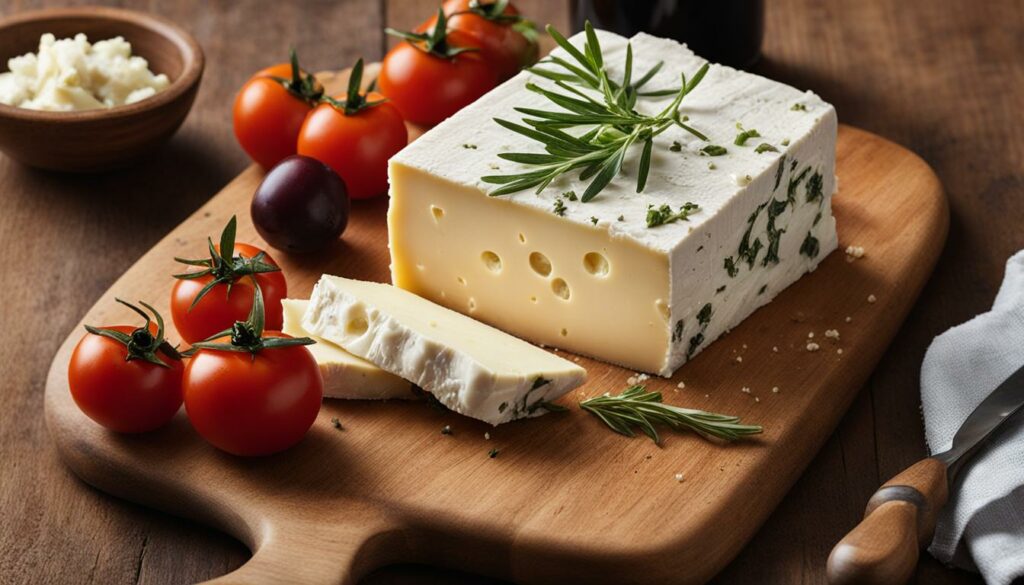
Feta cheese’s versatility extends to its usage in Mediterranean cuisine. It can be enjoyed on its own as a standalone cheese, crumbled over fresh salads, or used as a key ingredient in savory recipes. The tangy flavor and crumbly texture of feta cheese make it a favorite among both chefs and home cooks.
To highlight the significance of feta cheese, here is an insightful quote from a Greek culinary expert:
“Feta cheese is a cornerstone of Greek cuisine. Its tangy flavor and crumbly texture add a depth of flavor and an enjoyable bite to various dishes. From traditional Greek salads to spanakopita, feta cheese brings a distinct character that is unmistakably Greek.”
To summarize, feta cheese is a popular Greek cheese known for its tangy flavor and crumbly texture. Whether enjoyed on its own or used as an ingredient in recipes, feta cheese adds a delightful taste and texture that enhances any culinary creation.
History and Origin of Feta Cheese
Feta cheese has a rich history that traces back thousands of years to ancient Greece. It is believed to have been produced as early as the 8th century BC, making it one of the oldest types of cheese in the world. The production of feta cheese was a result of the abundance of sheep and goat farming in ancient Greece. Shepherds would collect the milk from their flocks and then use it to make this beloved cheese.
The origins of feta cheese can be attributed to the Mediterranean diet, which emphasizes fresh and nutrient-rich foods. Feta cheese played a significant role in the diet of the ancient Greeks, providing them with essential nutrients and flavors.

The production process of feta cheese in ancient Greece involved curdling the milk with the help of natural enzymes found in the stomachs of young animals. After curdling, the mixture was strained and then placed in brine for several months. This brining process not only preserved the cheese but also added a characteristic tangy flavor.
The ancient Greeks considered feta cheese to be a valuable source of nutrition and believed it to have various health benefits.
Over time, feta cheese gained popularity beyond the borders of ancient Greece. It became highly sought after in the Mediterranean region and became an integral part of Mediterranean cuisine. Today, feta cheese is known worldwide for its distinctive flavor and its versatility in various recipes.
Feta Cheese Production Process:
| Step | Description |
|---|---|
| 1 | Collecting sheep’s or goat’s milk from local farmers. |
| 2 | Heating the milk to a specific temperature. |
| 3 | Adding starter cultures and rennet to the milk. |
| 4 | Cutting the curd into small pieces. |
| 5 | Straining the curds and transferring them to molds. |
| 6 | Pressing the curds to remove excess whey. |
| 7 | Brining the cheese in a saltwater solution. |
| 8 | Aging the cheese in controlled conditions. |
Types of Feta Cheese
While Greek Feta is the most common and widely recognized type of feta cheese, there are actually different variations available that cater to diverse palates. Let’s explore some of these tantalizing options:
Bulgarian Feta
Made predominantly from sheep’s milk, Bulgarian Feta boasts a milder, creamier taste compared to its Greek counterpart. Its velvety texture adds a delightful richness to dishes.
French Feta
Originating from France, this luscious feta cheese is made from sheep’s milk and offers a smoother, creamier texture than traditional Greek Feta. Its refined flavor profile sets it apart.
Danish Feta
A standout variation, Danish Feta differs from the traditional recipe as it is made from cow’s milk. This unique twist lends it a milder taste and a softer, more delicate texture.
Discover the distinct flavor profiles and culinary possibilities of these feta cheese variations. Whether you’re seeking a subtle creaminess or a velvety texture, these options allow you to customize your culinary creations to perfection.
| Feta Cheese Type | Main Ingredient | Flavor Profile | Texture |
|---|---|---|---|
| Greek Feta | Sheep’s and/or goat’s milk | Tangy | Crumbly |
| Bulgarian Feta | Sheep’s milk | Milder, Creamier | Velvety |
| French Feta | Sheep’s milk | Smoother, Creamier | Smooth |
| Danish Feta | Cow’s milk | Milder | Softer |
Why Proper Storage Matters
Proper storage of feta cheese is crucial to maintain its quality, flavor, and safety. By following the correct storage practices, you can prevent bacteria growth, ensure flavor preservation, and extend the shelf life of your feta cheese. This not only reduces the risk of foodborne illnesses but also minimizes food waste. Improper storage can lead to spoilage, mold growth, and changes in texture, compromising the taste and overall enjoyment of the cheese.
So, why does proper storage matter? Let’s take a closer look:
1. Bacteria Growth Prevention
Feta cheese is a perishable product that contains moisture, which creates an ideal environment for bacteria to thrive. Proper storage helps inhibit the growth of harmful bacteria, such as Listeria monocytogenes, that can cause foodborne illnesses. To prevent bacterial contamination, it is essential to refrigerate feta cheese at or below 40°F (4°C) and consume it before its expiration date.
2. Flavor Preservation
The unique taste and texture of feta cheese can be affected by improper storage conditions. Exposure to air, fluctuating temperatures, and high humidity can accelerate flavor deterioration, resulting in a loss of its characteristic tanginess and creamy texture. To preserve the flavor of your feta cheese, store it in airtight containers or resealable bags to minimize exposure to oxygen and moisture.
3. Shelf Life Extension
Proper storage practices can significantly extend the shelf life of feta cheese. When kept in the refrigerator at a consistent temperature, feta cheese can stay fresh for several weeks beyond its sell-by or best-by date. However, it is important to note that the flavor and quality may gradually decline over time. To maintain the best possible taste and texture, consume your feta cheese within the recommended storage period.
By understanding the significance of proper storage, you can ensure that your feta cheese remains delicious and safe for consumption. Now that we’ve explored the importance of storing feta cheese correctly, let’s move on to the next section and discover how to choose the right feta cheese for your culinary needs.
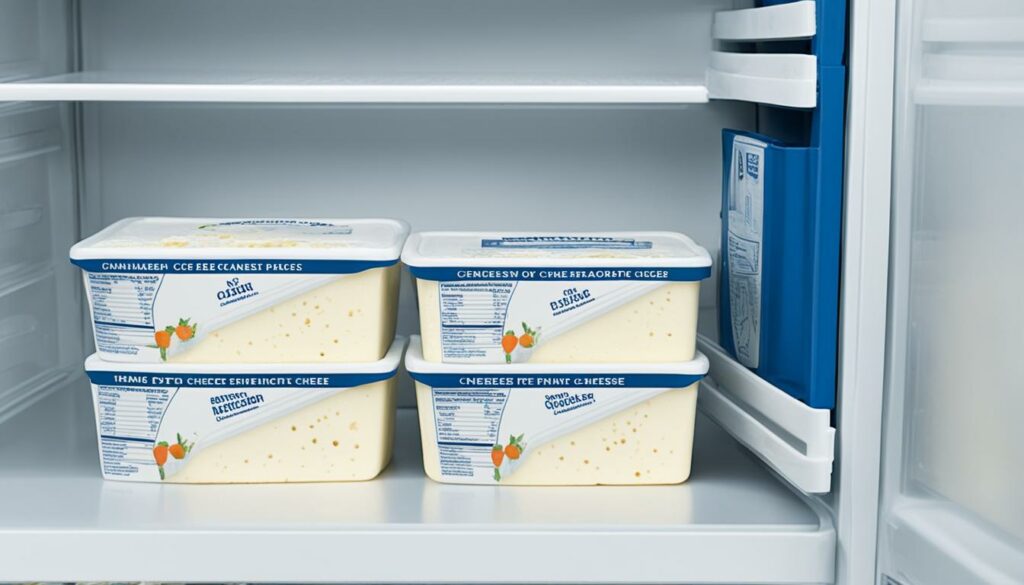
Choosing the Right Feta Cheese
When it comes to selecting feta cheese, understanding the different varieties can enhance your culinary experience. Whether you’re preparing a refreshing salad or a flavorful pasta dish, choosing the right type of feta cheese can elevate the taste and texture of your creations.
1. Fresh Feta Cheese
Known for its creamy texture, mild flavor, and slightly tangy taste, fresh feta cheese is a versatile option. It’s perfect for salads, sandwiches, or simply enjoyed on its own. The smooth and creamy consistency adds a delightful touch to any dish.
2. Aged Feta Cheese
If you’re looking to add depth and intensity to your recipes, aged feta cheese is a fantastic choice. With its crumbly texture and robust flavor, it makes a great addition to pasta dishes, baked goods, and savory appetizers.
3. Brined Feta Cheese
For those who appreciate a saltier flavor, brined feta cheese is the way to go. The brining process gives it a distinctively tangy and salty taste. It pairs well with olives, tomatoes, and other Mediterranean ingredients in salads and dips.
4. Vacuum-Packed Feta Cheese
If you prefer a milder taste and longer shelf life, vacuum-packed feta cheese is a convenient option. The packaging helps preserve its freshness and allows for a more extended storage period. It’s perfect for when you want to have feta cheese readily available in your pantry.
Remember, the right feta cheese depends on your personal preference and the specific dish you’re preparing. Whether you choose fresh or aged, brined or vacuum-packed, each variety brings its own unique flavor profile and characteristics to your recipes.

With a wide range of choices available, you can experiment with different types of feta cheese to discover your favorite flavors and combinations. Incorporate fresh feta cheese into light and refreshing dishes, while aged feta cheese can add richness and complexity to your culinary creations. Don’t be afraid to explore the salty and tangy flavors of brined feta cheese or opt for the convenience of vacuum-packed feta cheese.
Conclusion
In summary, Danish Feta Cheese is a culinary gem that adds a creamy and mild flavor to a variety of dishes. Its versatility makes it a favorite choice for salads, sandwiches, and Mediterranean-inspired recipes. Whether you’re a seasoned chef or a home cook, Danish Feta Cheese is a must-have ingredient in your kitchen.
Not only does Danish Feta Cheese elevate the taste of your meals, but it also offers health benefits. As a good source of calcium, it helps support strong bones and teeth. Additionally, Danish Feta Cheese contains probiotics that promote digestive health. And if you’re watching your calorie intake, Danish Feta Cheese is a lower calorie cheese option to enjoy guilt-free.
With its rich history and distinct flavor, Danish Feta Cheese captures the essence of traditional Greek cheese-making techniques. Whether you prefer the classic Danish Feta or one of its spiced variations, you’ll experience the true culinary versatility of this cheese. So why wait? Start exploring the world of Danish Feta Cheese and take your cooking to new heights!
FAQ
What is Danish Feta Cheese?
Danish Feta Cheese is a creamier and smoother variant of the original Greek Feta cheese. It is made from cow’s milk and has a mild flavor and soft texture.
How can I use Danish Feta Cheese in my recipes?
Danish Feta Cheese is well-suited for salads and can also be served grilled. It can be cubed or sliced without crumbling, making it versatile for a variety of dishes.
Where can I buy authentic Danish Feta Cheese?
You can find authentic Danish Feta Cheese at specialty cheese shops, gourmet markets, or online retailers that offer a wide selection of high-quality cheeses.
What are the origins of Danish Feta Cheese?
Danish Feta Cheese originated in Denmark and is a popular variation of the Greek Feta cheese. It is made from cow’s milk, setting it apart from other types of Feta cheese.
What are the nutritional benefits of Danish Feta Cheese?
Danish Feta Cheese is a good source of calcium and contains probiotics for digestive health. It is also a lower calorie cheese option compared to other types of cheese.
Who are the main producers of Danish Feta Cheese?
The main producers of Danish Feta Cheese include well-known dairy companies in Denmark that specialize in the production of high-quality cheeses.
Is Danish Feta Cheese exported to other countries?
Yes, Danish Feta Cheese is exported to various countries around the world, allowing individuals to enjoy its unique flavor and texture outside of Denmark.
What are some popular Danish Feta Cheese recipes?
Popular Danish Feta Cheese recipes include Mediterranean salads, stuffed bell peppers, grilled cheese sandwiches, and pasta dishes.
How does Danish Feta Cheese compare to other types of Feta cheese?
Danish Feta Cheese is made from cow’s milk, while traditional Greek Feta is made from sheep’s milk or a combination of sheep’s and goat’s milk. Danish Feta has a milder taste and softer texture compared to other types of Feta cheese.
Can you recommend any Danish Feta Cheese brands?
Some popular Danish Feta Cheese brands include Arla, Lillebælt Dairy, and Thise Dairy. These brands are known for producing high-quality Danish Feta Cheese.

